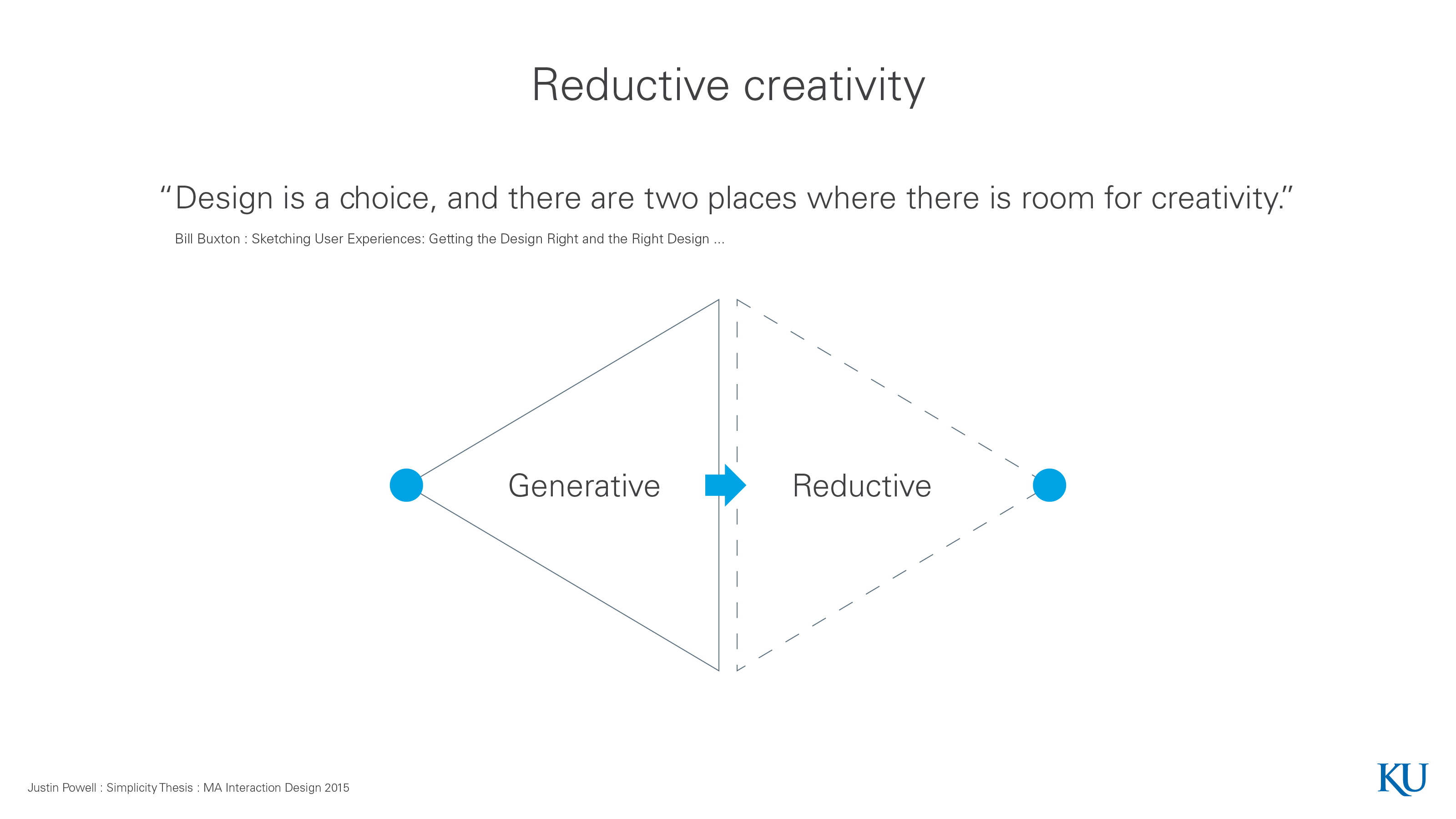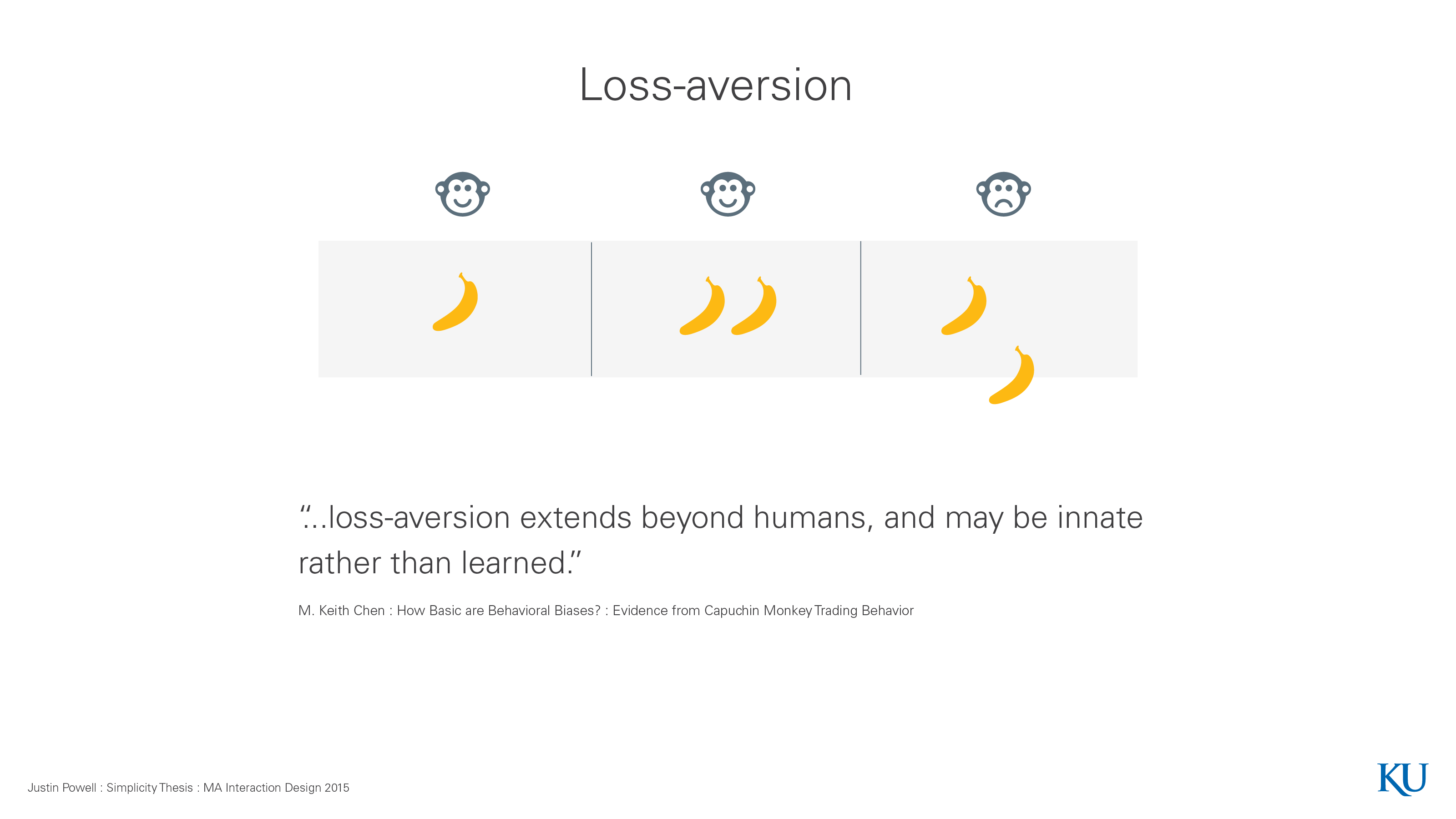Complexity and Emotion
According to Buxton (2007), “Design is a choice, and there are two places where there is room for creativity.” He further describes the two parts of the creative process, which are creating meaningful distinct options through idea generation, and defining the criteria in which choices are made through idea selection. During the idea generating part of software planning, elaborating on possible features of the software is often the more exciting part of the creative process. However, idea selection, though more challenging, is just as essential. In idea selection, one must consider what objective criteria should be used to reduce the ideas, this process is formally termed reductive creativity. During idea generation, the psychology principle of ownership bias emerges, and in idea selection, the reductive process prompts loss aversion.
Ownership bias occurs when one becomes overly attached to his or her own idea. This tempts one to “fall in love with the solution” instead of focusing on the objective human problem at hand. In other words, we don’t like to have our own ideas removed from the picture. Meanwhile, loss aversion refers to the human tendency to strongly prefer avoiding losses over acquiring gains. During software development, this manifests itself as a felt loss when features are cut. Because of loss aversion, it is difficult to remove a feature even if it may adversely affect the product solution. Ownership bias combined with loss aversion make reductive creativity challenging.

